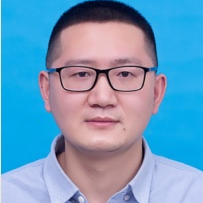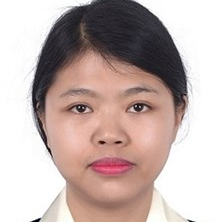Selected Papers from The 2023 IEEE International Conference on Digital Twin (Digital Twin 2023)
A special issue of Symmetry (ISSN 2073-8994). This special issue belongs to the section "Computer".
Deadline for manuscript submissions: 31 August 2024 | Viewed by 2368
Special Issue Editors
Interests: social computing; IoT; machine learning; blockchain; edge computing; VANET
Special Issues, Collections and Topics in MDPI journals
Interests: IoT; pervasive computing; assisted living and evolutionary computation
Special Issues, Collections and Topics in MDPI journals
Interests: medical image analysis; intelligent transportation systems; IoT; social networks analysis; mobile edge computing
Special Issues, Collections and Topics in MDPI journals
Special Issue Information
Dear Colleagues,
The 2023 International Conference on Digital Twin (Digital Twin 2023) will take place in Portsmouth, England, on 28–31 August 2023.
The 2023 IEEE International Conference on Digital Twin will provide a high-profile, leading-edge forum for researchers, engineers, and practitioners to present state-of-art advances and innovations on Digital Twins, as well as to identify emerging research topics and define the future of the field.
Track 1: Digital Twin Fundamentals
- Concepts and theories;
- Architecture and frameworks;
- Methodology, lifecycle, and processes;
- Data-driven-based modelling and technologies;
- Simulation-based approaches and technologies;
- Multi-physics and multi-scale simulation;
- Model-based system engineering;
- Computational dynamic modelling;
- Process and workflow modelling and simulation;
- Dynamic prediction and projection.
Track 2: Digital Twin Interaction and Communication
- Physical and virtual twin communication;
- Physical and virtual twin interaction;
- Distributed digital twin systems;
- Digital twin interoperability;
- Cooperative and collaborative digital twins;
- Digital twin networks and organisation;
- Distributed machine learning for digital twins;
- Twins and user interactions;
- User interfaces for digital twins.
Track 3: Digital Twin Security and Privacy
- Threat modelling in digital twins;
- Cybersecurity for digital twins;
- Cross-layer defence for digital twins;
- Digital twins for cybersecurity;
- Privacy protection in digital twins;
- Blockchain-based digital twins;
- Digital-twin-based intrusion detection systems;
- Digital-twin-based intrusion response systems.
Track 4: Digital Twin Systems and Applications
- Development tools and platforms;
- Standardization and regulation;
- Servitisation of digital twins;
- Automation and manufacturing;
- Digital health and assisted systems;
- Smart cities and transportation;
- Automotives and aerospace;
- Sustainable energy.
For more information, please visit the conference website: https://ieee-smart-world-congress.org/program/digitaltwin2023/overview
All published papers in the Special Issue belong to the journal of Symmetry, so the papers must fit both the scope of Symmetry and the conference.
Dr. Sahraoui Dhelim
Dr. Tao Zhu
Dr. Nyothiri Aung
Guest Editors
Manuscript Submission Information
Manuscripts should be submitted online at www.mdpi.com by registering and logging in to this website. Once you are registered, click here to go to the submission form. Manuscripts can be submitted until the deadline. All submissions that pass pre-check are peer-reviewed. Accepted papers will be published continuously in the journal (as soon as accepted) and will be listed together on the special issue website. Research articles, review articles as well as short communications are invited. For planned papers, a title and short abstract (about 100 words) can be sent to the Editorial Office for announcement on this website.
Submitted manuscripts should not have been published previously, nor be under consideration for publication elsewhere (except conference proceedings papers). All manuscripts are thoroughly refereed through a single-blind peer-review process. A guide for authors and other relevant information for submission of manuscripts is available on the Instructions for Authors page. Symmetry is an international peer-reviewed open access monthly journal published by MDPI.
Please visit the Instructions for Authors page before submitting a manuscript. The Article Processing Charge (APC) for publication in this open access journal is 2400 CHF (Swiss Francs). Submitted papers should be well formatted and use good English. Authors may use MDPI's English editing service prior to publication or during author revisions.







